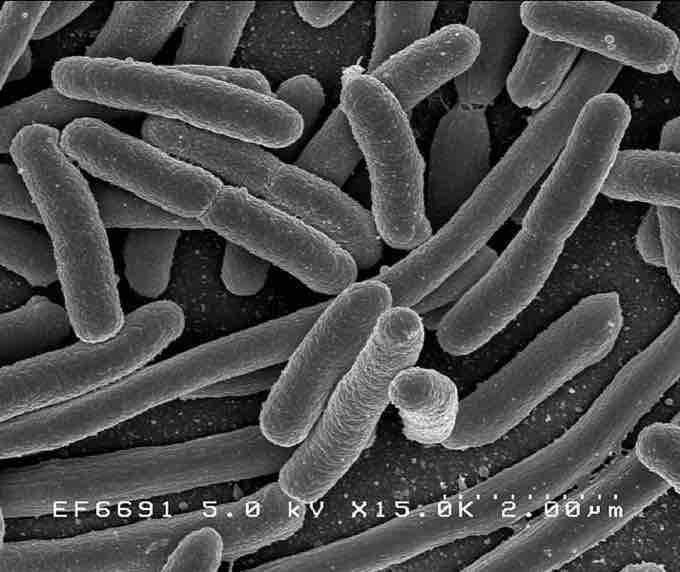Normal Microbiota
The phrase "normal microbiota" refers to the microorganisms that reside on the surface and deep layers of skin, in the saliva and oral mucosa, in the conjunctiva, and in the gastrointestinal tracts of every human being. These microorganisms are not harmful to humans; in fact, some are even beneficial and all help maintain our health. Our normal microbiota consists of various bacteria, fungi, and archaea. An example of our bacterial microbiota is E. coli . Many people think of E. coli as the bacteria that makes you sick; however while it has that capacity, it can also remain dormant and benign in your gastrointestinal tract for your entire life. All humans actually acquire E. coli shortly after birth with the intake of food or water. Other forms of bacteria present in the human gut are necessary for proper digestion of carbohydrates.

Escherichia coli
This is a magnified view of Escherichia coli (or E. coli).
Host Relationships
While our bodies are happy to host the array of microbiota that are considered "normal," the human body does not take a back seat when infection tries to use it as a host. Interestingly, normal microbiota can be key players helping the body fight off infection. Resistance to and recovery from viral infections depends on the interactions that occur between the virus and its host. The host has a variety of defenses that it uses to prevent infection. One of the first lines of defense is mucus, which has a range of normal microbiota that compete with and may even attack invading bacteria and virae.
Once a virus or bacteria makes its way past the skin and mucosa, there may be changes that occur in the host to diminish the invader's effectiveness. An example of such a change is a fever. There are a number of other humoral components of the nonspecific immune system as well. Specific immune responses are produced by antibodies. Different interferons (IgA, IgG, IgM, etc. ) play roles in defeating viruses located in our membranes. The body does not easily become a host to infection; it has a line up of defenses to try to protect you from harm.